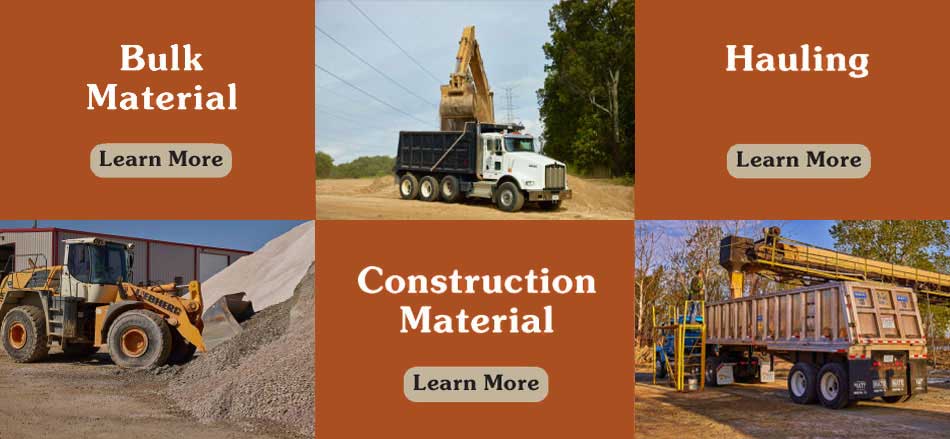

Your One-Stop Shop for Barge and Rail Terminaling and the Most Reliable Trucking Transportation For Your Dry Commodities
Construction crews create a compact base for their projects. A solid foundation is important. There are many different materials that contractors can use to create stable foundations, even out the terrain, and fill holes at the worksite. All of these materials must be applied correctly and compressed to build a strong foundation. Materials like sand, dirt, and rock that can be used to create these compact foundations are called “compactable fill.” There are three different types of compactable fill that are used in construction today.
Dirt Fill
“Fill dirt” can describe many different types of soil. Topsoil, subsoil, gravel, sand, and clay can all make up compactable fill in varying amounts to produce a product that is still considered “fill dirt.” The type used depends heavily on the project and its requirements. Creating the foundation for a building would require clean fill dirt high in clay, while leveling out a dip in a golf course would require the use of topsoil. This is because the first project would need a highly-compressed clean soil, and the second project would require soil that is rich in nutrients to support grass. Composition is critical in grading and compaction, and
project engineers will detail the specifics of what is needed from the compactable fill.
Rock Fill
Rock fill is used to even out or fill larger holes. It is usually made up of rocks harvested from excavation sites, and is useful for many large-scale projects. For developments that use rock fill, an added layer of topsoil must be placed on top of the rock fill for any landscaping endeavors. This layer of topsoil is often very thick, and the soil may need amendments.
Sand Fill
Fill sand takes many forms, but all are often used to fill areas that are low in elevation. Individual grains can be sharp or rounded, regular or irregular. These qualities that the sand exhibits on a small scale can have large-scale consequences in terms of its ability to be compacted. Sand is made up of crushed rock and does not compress or absorb water in the same way that dirt does, it’s often used to improve a site’s drainage. This is a popular fill material around ponds, septic tanks, and other damp areas.


